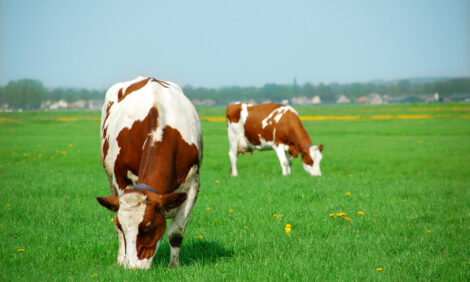



Antibiotic Resistance Varies Across Europe
EU - A recent test on antibiotic resistance in cattle, compiled across thirteen different European countries, has revealed stark differences in variation, possibly reflecting the difference in antimicrobial practices.Among those trying to decipher the origins and trajectory of Mycobacterium tuberculosis, the bacteria responsible for TB, are three researchers in ASU’s College of Liberal Arts and Sciences. Graduate student Luz-Andrea “Lucha” Pfister and associate professor Anne Stone in ASU’s School of Human Evolution and Social Change, and Michael Rosenberg, an assistant professor in the School of Life Sciences, are trying to establish a credible evolutionary timeline for TB.
Photo: Arizona State University
Their research suggests that the disease migrated from humans to cattle – not the reverse, as has long been assumed. The research estimates that the evolutionary leap took place prior to the domestication of cows – more than 113,000 years ago – indicating M. tuberculosis is a much older pathogen than previously believed.
This outcome supports that of the French Pasteur Institute’s Cristina Gutierrez, an evolutionary mycobacteriologist whose work first cast doubt on the cattle-to-human TB link and its date range. Gutierrez calls the findings of Pfister’s team confirmation of TB’s ancient origins and human-cattle transmission.
This summer, Pfister presented the results of the group’s research at the annual meeting of the Society of Molecular Biology and Evolution, in Barcelona. She also presented during the April assembly of the American Association of Physical Anthropologists and subsequently saw the group’s research reported on in the journal Science.
Why are scientists interested in TB’s status thousands of years ago? Pfister puts the research into perspective: “An accurate timeframe can help us learn about the development between host and pathogen. It can aid in understanding the disease and the way it evolves, how it creates new strains to stay alive.”
As Stone is quick to point out, “The data we generate can be used by clinicians to study this disease and formulate appropriate treatments. Our work is historical, but the implications are far-reaching.”
Further Reading
| - | Find out more information on Bovine TB by clicking here. | |
| - | You can view the full report by clicking here. |
TheCattleSite News Desk


